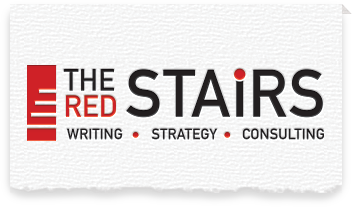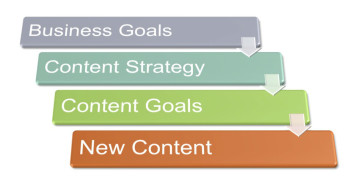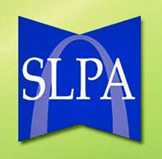An editorial calendar will keep your content development on track, but how can you use it to align your content to your organization’s long-term strategic goals?
First, you have to convert the business goals into content goals. Then you map your content topics to your plan and use your editorial calendar to schedule the stories for the greatest impact and reader interest.
(Click here to read “Content marketers need to plan like an editor “, the first part of this discussion on the value of editorial calendars to content marketing.)
http://wp.me/p2YY2U-pM
Example of how to map content to business goals
Business goal
A legal firm wants to grow its estate planning practice aggressively. It prefers vehicle crash cases to dog bite cases in its personal injury practice area.
Content strategy
Focus content development resources on stories about estate planning to build credibility and show your expertise for newlyweds, new parents and pre-retirement audiences.
Content goal
Fifty percent of content creation will be on estate planning issues and stories; 30 percent on vehicle crashes; 20 percent on other practice areas. Exclude all dog bite stories.
When it comes to a strategic editorial calendar, what you track depends entirely upon your content objectives and business goals, but here are some ideas.
-
Categories
Grouping related stories together will keep you focused on creating content that is valuable to the communities you serve.
-
Sharing channels
This can be so much more than a list of where you push your content. Keep a record of shares, likes and comments for valuable insights into what content is effective for your business.
-
Objective, goal and purpose mapping
With every piece of content you create ask yourself “Why is this important?”. You should have a good business reason for every piece of content your publish.
-
Audience mapping
The better you know your reader the easier it is to talk to him or her. Developing audience personas will help you go beyond the demographics. The most effective content resonates with real people. When creating content ask the following question, “What would (insert persona type/name) make of this?”
-
Review and expiration dates
To prevent out-of date-content lingering past its best-by-date, create an expiration policy and include the review date on your calendar. Some content management systems (CMS) allow you set reminders and alerts for this purpose.
Some stories are evergreen and will be valuable to readers for a long time, while other can be overcome by events such as improvements in technology, medical research, changes in the law and adjustments to the tax code. Out of date content has a negative impact on your brand credibility.
-
Workflow and progress tracking
If you create large quantities of content either for your organization or for your clients, the editorial calendar offers an effective way to track status.
Keeping a record or when your legal department, product manager or others in your approvals workflow signed off the content means you always know your content’s status in the publishing workflow.
An effective editorial or content calendar is a valuable strategic resource that not only helps you plan for the future but also provides you with a detailed inventory of what you have done to date. I cannot think of a more effective tracing technique for obtaining insights into what content works best and moves you towards your businesses strategic goals.
For a copy of my editorial calendar template, sign up here.
[download file=”https://theredstairs.com/wp-content/uploads/2013/09/The-Red-Stairs-Editorial-Calendar-Template.xls” title=” The Editorial Calendar Template”]


 Society of Professional Journalists (SPJ) Board Member since 2012
Society of Professional Journalists (SPJ) Board Member since 2012 Society of Professional Journalists (SPJ) Board Member since 2014
Society of Professional Journalists (SPJ) Board Member since 2014 American Copy Editors Society (ACES)
American Copy Editors Society (ACES)
